
 A trio of renaissance pyramids were erected at their North African Atlantis formation by estranged Sirians who had been forced to resettle and create Earth colonies when irreconcilable problems had made living circumstances impossible on Mars. The Great Pyramid of “Giza” is by far the most significant of the group and it was constructed first. Joint venture project that ratified their open truce with resident Lemurians (who laid building foundations), the location marked the southernmost point of the new Atlantis (Sirian designated territory) republic. Mu, magnificently representative of most well rounded Lemurian continental cosmopolitan ambitions, was not restricted to the [then] tropical equatorial regions. Their infamous universal arts centre was in fact situated “down South” (though this was north prior to the Earth crust slip). Rainbow City was and is strategically positioned on the continent of Antarctica but that globe’s hallowed secret has been submerged for millennia, shrouded by pack ice (some theorise its locality was the targeted destination of Admiral Byrd’s alleged post WWII expedition).
A trio of renaissance pyramids were erected at their North African Atlantis formation by estranged Sirians who had been forced to resettle and create Earth colonies when irreconcilable problems had made living circumstances impossible on Mars. The Great Pyramid of “Giza” is by far the most significant of the group and it was constructed first. Joint venture project that ratified their open truce with resident Lemurians (who laid building foundations), the location marked the southernmost point of the new Atlantis (Sirian designated territory) republic. Mu, magnificently representative of most well rounded Lemurian continental cosmopolitan ambitions, was not restricted to the [then] tropical equatorial regions. Their infamous universal arts centre was in fact situated “down South” (though this was north prior to the Earth crust slip). Rainbow City was and is strategically positioned on the continent of Antarctica but that globe’s hallowed secret has been submerged for millennia, shrouded by pack ice (some theorise its locality was the targeted destination of Admiral Byrd’s alleged post WWII expedition).
 Olmec and Mayan records report of strange accounts concerning (with a few illustrations to back them up) community “snake people”. These oppressors were generally disliked by chroniclers, yet there have been sinister rumours (captured by séance rather than attributed to any doomsday collection) suggesting a battalion rests cryogenically frozen at Rainbow City vaults, awaiting activation for global takeover. Whether true or not is beside the by. I can say for certain that these are one species type of the [many] reptilian agencies that utilise the Sephardim’s False Matrix (a misuse of structural prisms that effervescently connect sun, moon and Earth) to influence mankind for their selfish purposes. Modern versions of snake people lack “trademark” dramatic coat hanger moustaches or wispy free flowing Asian beards. When not showing off their permanently whimsical smiles, they appear to favour grimacing sarcastically. One associated image that perpetually plagues my mind resembles a living version of Kermit the frog.
Olmec and Mayan records report of strange accounts concerning (with a few illustrations to back them up) community “snake people”. These oppressors were generally disliked by chroniclers, yet there have been sinister rumours (captured by séance rather than attributed to any doomsday collection) suggesting a battalion rests cryogenically frozen at Rainbow City vaults, awaiting activation for global takeover. Whether true or not is beside the by. I can say for certain that these are one species type of the [many] reptilian agencies that utilise the Sephardim’s False Matrix (a misuse of structural prisms that effervescently connect sun, moon and Earth) to influence mankind for their selfish purposes. Modern versions of snake people lack “trademark” dramatic coat hanger moustaches or wispy free flowing Asian beards. When not showing off their permanently whimsical smiles, they appear to favour grimacing sarcastically. One associated image that perpetually plagues my mind resembles a living version of Kermit the frog.
At the time of the Great Pyramid of Giza’s erection, our planet was topologically very different than it is today. The structure was used by some stakeholders to control nature. Compared against humans’ with our paltry sciences, these luminaires were magic weaving Gods. Their all-consuming power was such that reptilians would not dare venture to the planet surface even metaphysically. Only long after offending wizards had emigrated did curiosity permit cautious expeditions to Southern Africa (which at that time was a continent island proportionally larger than modern day Australia) from around 20,000BC onwards. Initial games designed to tease and trap local inhabitants grew into a full blown effort to “conquer” mankind. Nevertheless this threat was finally thwarted by great warrior iXossana (formally remembered as Hosanna) in around 16,340BC (shall we say). He is largely the reason why physical reptilians have avoided significantly integrating with humans. When not protected by special technologies, they are relatively easy to subdue by us. Certain metals, such as tungsten, to them are so toxic; a mere scratch from the tip of a spear can be fatal.
 Many wild theories have attempted to project how the Great Pyramid was constructed, so I will disclose my own best approximation of the truth on the matter in due course. This is actually a subject that regularly crops up in my articles, perhaps because the pyramid is such a key monument of its era. Even so, I don’t recall ever attempting to unravel the “how” or “why” beyond detailing evolution of certain aspects of Sirian politics prior to their disbanding Mars. Though I have used the “rounded up” construction date of circa 29,000BC before, regularly, no suggestion as to building methods employed has ever been made by me. In accordance with their truth throttling sciences, it is impossible for mainstreamers to view this objectivity. Ever familiar follow our leader “standards” prop up some of the most ludicrous fantasies man can commit to mind on the subject. When frivolous candour is applied with ardent zeal (which is almost always the case) only buffoons unfit for free thought might plausibly surrender to the farce.
Many wild theories have attempted to project how the Great Pyramid was constructed, so I will disclose my own best approximation of the truth on the matter in due course. This is actually a subject that regularly crops up in my articles, perhaps because the pyramid is such a key monument of its era. Even so, I don’t recall ever attempting to unravel the “how” or “why” beyond detailing evolution of certain aspects of Sirian politics prior to their disbanding Mars. Though I have used the “rounded up” construction date of circa 29,000BC before, regularly, no suggestion as to building methods employed has ever been made by me. In accordance with their truth throttling sciences, it is impossible for mainstreamers to view this objectivity. Ever familiar follow our leader “standards” prop up some of the most ludicrous fantasies man can commit to mind on the subject. When frivolous candour is applied with ardent zeal (which is almost always the case) only buffoons unfit for free thought might plausibly surrender to the farce.
Favoured complex diagrams consist of technologically unassisted neo-cavemen hauling giant polystyrene boulders hundreds of miles with their bare hands for abject purposes. Yet the reality doesn’t even remotely compare, for the pyramid was put up very quickly; perhaps only in a few days. That said, at least a few fringe scholars have gone out of their way to punctuate modicums of good sense. Arguably the most famous, Graham Hancock for instance has commented on “millimetre perfect” alignment of stone joins “impossible to recreate with the finest of our modern era machines”. Other plausible analyses, alien to the mainstream, seriously consider potential for project use of sonar calibration. However, if that was to be correct, cyclic duration would have needed to run over centuries, assuming source materials were relatively “local”. How the feat was truly achieved is cleverly hinted at in Mayan texts. There’s a lot more to these Mayans than teases the untrained eye.
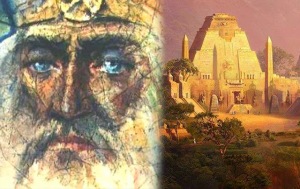 The particular passage I have in mind concerns a dangerous episode accommodating a period when Viracochas (native “Gods”) came amongst the people who were rightly wary of the visitors. In light of this the Gods decided they needed some sort of “diversion” demonstrating their extraordinary power that might reduce onlookers to a state of awe, thus assuaging the potential for any further popular distrust. With that they effortlessly transported giant rocks (presumably each weighing several tonnes) before the eyes and indeed “to the awe of” speechless witnesses. Texts specifically highlight symptoms whereby stones, initially engulfed in flames, were rendered as light as balsa wood. My explanation for this phenomenon may sound rather obvious, but truths often are. Everything that “is” is made of light. Therefore, managing consistency of frequency is the key to adapting energy.
The particular passage I have in mind concerns a dangerous episode accommodating a period when Viracochas (native “Gods”) came amongst the people who were rightly wary of the visitors. In light of this the Gods decided they needed some sort of “diversion” demonstrating their extraordinary power that might reduce onlookers to a state of awe, thus assuaging the potential for any further popular distrust. With that they effortlessly transported giant rocks (presumably each weighing several tonnes) before the eyes and indeed “to the awe of” speechless witnesses. Texts specifically highlight symptoms whereby stones, initially engulfed in flames, were rendered as light as balsa wood. My explanation for this phenomenon may sound rather obvious, but truths often are. Everything that “is” is made of light. Therefore, managing consistency of frequency is the key to adapting energy.
Notably, and largely contrary to popular physics opinion, all light is not the same. Indeed Einstein’s ill experience (a symptom of peer group conditioning) contributed to error that censored certain critical fields of the photon which should have been prevalent. Greater comprehensive understanding of light reveals a full spectral range that compartmentalises dimensions. In other words, properties of light dramatically change as different dimensional bandwidths are “accessed” by experiencers. There is one brilliant video I know of showing off this paranormal phenomenon. A short scene presents an oddly shaped humanoid (presumed alien to Earth) that quite literally disappears in a flash of light, maybe something akin to a prominent magician’s grand finale. Other less glamorous reports outline complimenting scenarios.
Mythical fire breathing dragons could have quite realistically been on the cusp between dimensions and that would explain why they were so hard to catch
 If the Atlantis leaders had comparable technologies/methods to characteristically Sirian Viracochas, then pyramid stones rendered as light as balsa wood could have been expertly placed in position within days. Even clumsy humans might pull off that task too. Supposition rests on the case that the project would have been run (simultaneously) outside object reality whilst “in physicality”. There is perhaps one other possibility. Prior essays of mine have noted Atlanteans were able to change atomic molecular structure simply by applying the mind. Did they transmute the Great Pyramid’s blocks into something lighter and better suited to their purposes? Were they able remove atomic magnetism? As an opinion, this is the one I favour the most. It suits Sirian behaviour. That’s just the sort of thing they would have done. In fact they relished these type of mind over matter contests.
If the Atlantis leaders had comparable technologies/methods to characteristically Sirian Viracochas, then pyramid stones rendered as light as balsa wood could have been expertly placed in position within days. Even clumsy humans might pull off that task too. Supposition rests on the case that the project would have been run (simultaneously) outside object reality whilst “in physicality”. There is perhaps one other possibility. Prior essays of mine have noted Atlanteans were able to change atomic molecular structure simply by applying the mind. Did they transmute the Great Pyramid’s blocks into something lighter and better suited to their purposes? Were they able remove atomic magnetism? As an opinion, this is the one I favour the most. It suits Sirian behaviour. That’s just the sort of thing they would have done. In fact they relished these type of mind over matter contests.
Water bound Pleiadians (occasionally referred to as Oannes), a Sirian close genetic relative, had the inert ability to transform their fish tails into makeshift legs suitable for ground perambulation. Rare reports that identify this strange activity add the following information. Pleiadians, it seems, could only keep up surface dwelling antics for a few hours at a time. They apparently needed to be immersed in water for significant periods to help them combat the rigors of life. Even so, if parallels can be drawn from Sirians’ sensational atomic achievements, perhaps Pleiadians were contenders as stone masons also. Although the balance weighs against the debate in this instance, as I recall an interesting account detailing an unknown’s vision of a several metres high solid gold statue encased in arctic ice (which covets remains of the fallen Atlantis technology city). Beyond the obvious permanence of the relic, I can add the gold used had originally been procured from wood. Little wonder Plato whipped up alchemy hysteria at the drop of a hat. That impressive entombed landmark was not natural, but, rather, dedicated evidence of lasting Sirian willpower.
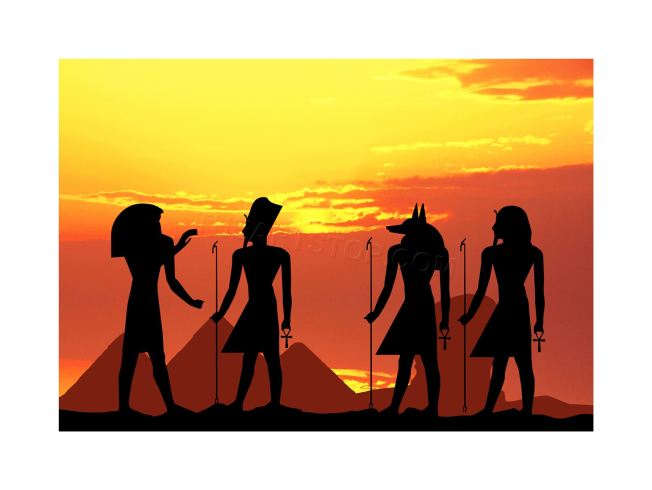 Coincidentally, the top stone of the Great Pyramid of Giza was solid gold too (sadly removed by plunderers long ago) as that metal is one of the most efficient superconductors. Many have reasonably speculated whether pyramids doubled as power stations. Nevertheless, before I go into this and the multiple other uses of the Great Pyramid, I would like to focus on the temple or holy aspect. In association, there is one true God that presides over the structure whose name is “Bak’ti”. One God per pyramid has been the custom ever since memory persists, so any other claims of divine attachment in relation to the site can only be regarded as false. The information concerning the specific culprit was provided [to me] by inherent sources, so I needed to search the name on Google to ascertain whether the entity was formally known and was a “deity”. Interestingly, here is what I turned up (no video, only “junk” advertising!).
Coincidentally, the top stone of the Great Pyramid of Giza was solid gold too (sadly removed by plunderers long ago) as that metal is one of the most efficient superconductors. Many have reasonably speculated whether pyramids doubled as power stations. Nevertheless, before I go into this and the multiple other uses of the Great Pyramid, I would like to focus on the temple or holy aspect. In association, there is one true God that presides over the structure whose name is “Bak’ti”. One God per pyramid has been the custom ever since memory persists, so any other claims of divine attachment in relation to the site can only be regarded as false. The information concerning the specific culprit was provided [to me] by inherent sources, so I needed to search the name on Google to ascertain whether the entity was formally known and was a “deity”. Interestingly, here is what I turned up (no video, only “junk” advertising!).
 Further explanation is needed here. Because deities live for extraordinary lengths of time (eons), they tend to adopt many different bodies or personas. Keurivon (the closest I can approximate the diphthong) is the physical presence connected to the Great Pyramid. So, to reiterate, though the God is called Bak’ti, his local incarnation was referred to as Keurivon. Of course, being a mere mortal, he was destined to die, but after he passed, his residence was remembered as something much greater than a mere mausoleum. Firstly, his remaining corpse needed no embalming because it could not decay while below the pyramid (whose precise dynamics executed a natural miracle allowing the constant preservation of life). Indeed the secret is well known. Miniature versions made of plastic were briefly mass produced (by us) in the 1970’s. Though that fad petered out quickly, I learn that unrefrigerated milk would apparently keep without spoiling for days, when carefully placed beneath a canopy.
Further explanation is needed here. Because deities live for extraordinary lengths of time (eons), they tend to adopt many different bodies or personas. Keurivon (the closest I can approximate the diphthong) is the physical presence connected to the Great Pyramid. So, to reiterate, though the God is called Bak’ti, his local incarnation was referred to as Keurivon. Of course, being a mere mortal, he was destined to die, but after he passed, his residence was remembered as something much greater than a mere mausoleum. Firstly, his remaining corpse needed no embalming because it could not decay while below the pyramid (whose precise dynamics executed a natural miracle allowing the constant preservation of life). Indeed the secret is well known. Miniature versions made of plastic were briefly mass produced (by us) in the 1970’s. Though that fad petered out quickly, I learn that unrefrigerated milk would apparently keep without spoiling for days, when carefully placed beneath a canopy.
Roughly confined to the pyramid (I discuss why later), a replication of the God’s incarnate life force had also been preserved somehow. Nevertheless it could not be perceived in mundane physicality. Only those blessed with the gift of transcendence were able to collect with various past life forms connected to the deity. As a consequence, regular ceremonies were held at the temple (in effect, the primary function of the pyramid) which only included those with the capacity to be holy. Rites were normally performed in silence by fellows clad in ornate dress. Each member needed to change the frequency of his own brain waves until it was possible to integrate as a group (authentic communion, an intriguing exercise the [Zeta] Grey Beings use as well, according to Suzy Hansen). I sense that the (frequency) pitch (of brain waves) needed to rise steeply in order to reach opportune divine plateau.
Characteristic chants that have become a feature of religious culture I believe were actually adopted from ancient reptilian priests attempting to mimic those they had never had privilege to witness
 The Great Pyramid’s Interior was poorly lit but not dark. About the place characteristic greens (notably turquoise or jade) and electric blues routinely dissected drab sage, fawn or sandy coloured wall washes. The dwelling has a robustly masculine feel to it. It rather reminds me of a sombre royal chamber, very clean, but over formal, welling up the daunting expectations (if that makes sense) of any ambitious caller. There is an atmosphere there which I wouldn’t quite describe as austere, but the vibe is close. Corresponding attitude of any located participants would surely need to be precise and uniform. But this is not the haunt of ordinary souls. A little more on the lighting will improve detail. Perhaps emulating the dull glow of modern day “exit” signage, here lamp casings are large and ornate. Surprisingly, they would better feature in a Mayan setting. There is a single low standing (maybe only a few centimetres off the ground) table which appears to act as temporary altar. Liberally placed upon its surface are various items of sentimental value, but I see none of them clearly enough to recognise or identify, beyond a remarkable radiant blue gem stone (lustre I must say appears somewhat muted by the pressing dimness). Each item apparently represented a significant place in history, so the complete batch aimed to collectivise time.
The Great Pyramid’s Interior was poorly lit but not dark. About the place characteristic greens (notably turquoise or jade) and electric blues routinely dissected drab sage, fawn or sandy coloured wall washes. The dwelling has a robustly masculine feel to it. It rather reminds me of a sombre royal chamber, very clean, but over formal, welling up the daunting expectations (if that makes sense) of any ambitious caller. There is an atmosphere there which I wouldn’t quite describe as austere, but the vibe is close. Corresponding attitude of any located participants would surely need to be precise and uniform. But this is not the haunt of ordinary souls. A little more on the lighting will improve detail. Perhaps emulating the dull glow of modern day “exit” signage, here lamp casings are large and ornate. Surprisingly, they would better feature in a Mayan setting. There is a single low standing (maybe only a few centimetres off the ground) table which appears to act as temporary altar. Liberally placed upon its surface are various items of sentimental value, but I see none of them clearly enough to recognise or identify, beyond a remarkable radiant blue gem stone (lustre I must say appears somewhat muted by the pressing dimness). Each item apparently represented a significant place in history, so the complete batch aimed to collectivise time.
Elite gatherings would regularly congregate to capture an audience before Bak’ti (or Keurivon, as they knew him). The great God would issue profound random advice and, on occasions, attempt to craft solutions remedially addressing pressing social problems outside the complex. These laments effectively became basis for scriptural law. Direct “word of God” was later superseded by innuendo and trickery of course (i.e. Moses’ burning bush). Elders did their upmost to accurately preserve the musings of Bak’ti, though whether he would formally “class” as a God today is debatable. Quintessentially, and certainly in Western society, only effervescent personalised oneness of infinity (An) is recognised now, be it this is often personified by a portly white haired Caucasian gringo languishing in “heaven”. In ancient times Gods were able to impress insignificant ones by demonstrating their power. As belief in Gods and devotes’ ability to worship waned, gradually they lost their congenital authority, until they were eventually no longer able to exist.
 Returning to the Great Pyramid’s lofty interior, I note it was expansive enough to function as a spiritual emporium catering for multiple ideals. Different chambers provided host for various unrelated purposes. For example, a strange contingency of misshapen dwarves who always seemed fiercely hostile towards onlookers permanently resided in one wing of the building. Foreign ambassadors did occasionally visit to collect trophies as it seems the group could provide intriguingly accurate hierological data that pertained to but differed from Keurivon’s wisdom. Maybe this is the result of perspective limitations, but I would swear that some chambers were internally much, much more voluminous than external specifications might validate. The phenomenon aptly matches those “Tardis style” inter-dimensional one or two man Vimanas that impossibly open up to blossom into interiors (sometimes) consisting of several rooms.
Returning to the Great Pyramid’s lofty interior, I note it was expansive enough to function as a spiritual emporium catering for multiple ideals. Different chambers provided host for various unrelated purposes. For example, a strange contingency of misshapen dwarves who always seemed fiercely hostile towards onlookers permanently resided in one wing of the building. Foreign ambassadors did occasionally visit to collect trophies as it seems the group could provide intriguingly accurate hierological data that pertained to but differed from Keurivon’s wisdom. Maybe this is the result of perspective limitations, but I would swear that some chambers were internally much, much more voluminous than external specifications might validate. The phenomenon aptly matches those “Tardis style” inter-dimensional one or two man Vimanas that impossibly open up to blossom into interiors (sometimes) consisting of several rooms.
There were other cosmic uses of the pyramid. I mentioned earlier that its top stone was made of gold. Perhaps I should have referred to St Germaine’s described memories of some sort of coating that had been applied to the surface of the structure then Though he did not outline which particular “hue” the shine generated, it is easy to quantify. On a clear day, from great distance, casual observers would witness the most magnificent landmark that dazzled so brilliantly it was as though it was entirely made of gold. Close up inspection permitted review of a rather odd occurrence. Normally “shimmering” glassy silver, the pyramid’s iridescence could change mood as tumultuously as an angry sky, all the while pulsating vibrant, eye-piercing colours. Casual worshipers restricted from entering the temple were allowed to congregate outside. Akin to modern day Israelite fanatics who foolishly prostrate before the whimsical Wailing Wall, temple visitors might place both palms on the surface lacquer in order to connect with God. The experience was so intense for many; they would be compelled to writhe in general ecstasy.
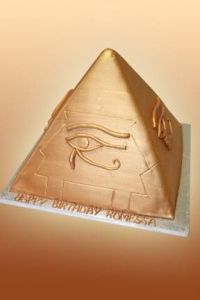 Gnostic formulated speaking with tongues tradition eerily approximates outcomes. Certain Jewish and other religious sects have provided concubines to achieve “oneness with God”. Sex or potence is the life (base) chakra. Anyway, according to St Germaine, adepts (that connected with the pyramid) each received massive cosmic information downloads, leaving them in no doubt as to the purpose of life and relative existence. Clerics inside the temple had access to a makeshift tannoy system whereby members of their external brethren could be informed of pressing hierological warnings. Moses took advantage of a mobile version (Ark of the Covenant) to “conjure” God’s Commandments. Ancient power stations are located all over this planet as several alternative historians’ have been at pains to illustrate. Some are still active or, rather, to be more precise, by that I mean. with application of correct procedural knowhow, some of these prehistoric machines would generate power again.
Gnostic formulated speaking with tongues tradition eerily approximates outcomes. Certain Jewish and other religious sects have provided concubines to achieve “oneness with God”. Sex or potence is the life (base) chakra. Anyway, according to St Germaine, adepts (that connected with the pyramid) each received massive cosmic information downloads, leaving them in no doubt as to the purpose of life and relative existence. Clerics inside the temple had access to a makeshift tannoy system whereby members of their external brethren could be informed of pressing hierological warnings. Moses took advantage of a mobile version (Ark of the Covenant) to “conjure” God’s Commandments. Ancient power stations are located all over this planet as several alternative historians’ have been at pains to illustrate. Some are still active or, rather, to be more precise, by that I mean. with application of correct procedural knowhow, some of these prehistoric machines would generate power again.
Nevertheless, visualising the way a stereotypical caveman might react to a modern day computer system aptly analogises the void in materialist comprehension as to the true scope of stone power. For instance, there are some devices that require the right mind to unlock processes. King Arthur’s Excalibur tale reflects that genetic provenance link. Whether ordinary minds could be boosted to do the same job is debatable. Taking the view it is possible, then if apt instruction provided detail on how to apply the mind sufficiently, operational success may well be guaranteed (subject to the apprentice’s physical limitations, of course). Even so, it would be foolish to presume all technologies are guaranteed to function. Inevitably some will be irreparably broken. The Great Pyramid is an excellent case in point. Reiterating my earlier statement, Israelite Moses, who some theorise doubled as the Babylonian temple scribe Barach, stole the switch box and in doing so, rendered the structure impotent.
 When discussing my opinion as to how the granite giant was erected, I failed to mention that stones are “pinned” together with fashioned metal stirrups. The Sirians used some special alloy that is ideal for power generation purposes. I am not convinced all the ingredients can be found on Earth though. Whatever their origin may be, they were strategically positioned to provision as seams that allowed the uniform transfer of wireless electricity. One of the great drawbacks was stations in operation continuously provided energy supply. A common side effect for people that ventured too close to a pyramid’s perimeter attracted much static. It also made the afflicted feel faint and left an inexplicable metallic taste in the mouth, perhaps somewhat vilifying those writhing convulsions of visiting worshipers. Some devices had no on/off switch. Mostly functioning robots or specialised automatons, for these, when power was present, it was though they were given the breath of eternal life.
When discussing my opinion as to how the granite giant was erected, I failed to mention that stones are “pinned” together with fashioned metal stirrups. The Sirians used some special alloy that is ideal for power generation purposes. I am not convinced all the ingredients can be found on Earth though. Whatever their origin may be, they were strategically positioned to provision as seams that allowed the uniform transfer of wireless electricity. One of the great drawbacks was stations in operation continuously provided energy supply. A common side effect for people that ventured too close to a pyramid’s perimeter attracted much static. It also made the afflicted feel faint and left an inexplicable metallic taste in the mouth, perhaps somewhat vilifying those writhing convulsions of visiting worshipers. Some devices had no on/off switch. Mostly functioning robots or specialised automatons, for these, when power was present, it was though they were given the breath of eternal life.
Because the ancient generators were positioned to syphon off and recalibrate the Earth’s natural energy vortex (defying conventional interpretation of Newton’s parameters justifying Earth’s gravitational pull), it was also possible to control local weather systems. That, of course, was one of the Great Pyramid’s significant supplementary roles as well
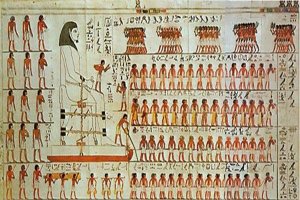 Graham Hancock and others have observed that authentic structures are consistently free of inscriptions. Indeed, when cartouches are found, they do not belong. Humans, natural copycats (a feature of our parasitic nature), tried to emulate the mastery of the Sirians poorly. Therefore cartouches may well have reflected the lack of superior technologies, but I think were mostly applied as a way of paying subtle tribute to the ancestors. As Hancock notes, miles beyond miles of imposters’ remains have created the modern day Egyptian ruins graveyard. Graveyards have an unbreakable connection with the divine which tells us human dynasts desperately tried to achieve Sirian transcendental immortality. Of course fakes were much less robust than genuine articles and easy to disassemble. Consequentially many stones were raided by subsequent generations for building materials reducing dead “slaves’” toil to nihilism.
Graham Hancock and others have observed that authentic structures are consistently free of inscriptions. Indeed, when cartouches are found, they do not belong. Humans, natural copycats (a feature of our parasitic nature), tried to emulate the mastery of the Sirians poorly. Therefore cartouches may well have reflected the lack of superior technologies, but I think were mostly applied as a way of paying subtle tribute to the ancestors. As Hancock notes, miles beyond miles of imposters’ remains have created the modern day Egyptian ruins graveyard. Graveyards have an unbreakable connection with the divine which tells us human dynasts desperately tried to achieve Sirian transcendental immortality. Of course fakes were much less robust than genuine articles and easy to disassemble. Consequentially many stones were raided by subsequent generations for building materials reducing dead “slaves’” toil to nihilism.
Genuine pyramids were “businesses” (though not normally commissioned to trade) with working interiors which were almost always liberally furnished. Certain chambers would have housed dedicated esoteric machines (I doubt any were even vaguely comparable with anything that operates today). My earlier mention of unmistakable stylish wall lighting deserves elaboration. Ceilings were sometimes illuminated by unknown means too. It would be unusual for there not to be extra foundations below ground. Giza’s great monument is no exception. It conceals various cavernous areas at different depths. I understand one or two locations have been informally discovered, but the majority remain beyond reach. There was an ancient parallel network of subterranean caverns long predating the pyramid.
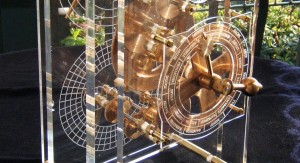 Vaults were loaded with rare extraordinary technologies and I believe the Sirians’ plan was to eventually consolidate a giant underground facility by interconnecting tunnel systems. The beings that owned the earlier site would certainly class as “not of this Earth” by modern science standards even though they have been resident here for a very long time. Because they never venture to the planet surface, they remain unidentified to this day. For some reason, perhaps the premature end of Atlantis, the Giza cellar complex was not completed. I am not sure even if the more ancient facility is operated today either. But returning to the two informally known hidden caverns, aside from the rather interesting associated devices found, an even more remarkable discovery was made. In one room is a continually active light portal or, at least, I am led to believe it is continually active.
Vaults were loaded with rare extraordinary technologies and I believe the Sirians’ plan was to eventually consolidate a giant underground facility by interconnecting tunnel systems. The beings that owned the earlier site would certainly class as “not of this Earth” by modern science standards even though they have been resident here for a very long time. Because they never venture to the planet surface, they remain unidentified to this day. For some reason, perhaps the premature end of Atlantis, the Giza cellar complex was not completed. I am not sure even if the more ancient facility is operated today either. But returning to the two informally known hidden caverns, aside from the rather interesting associated devices found, an even more remarkable discovery was made. In one room is a continually active light portal or, at least, I am led to believe it is continually active.
Because so-called “star gates” are catalytic phenomena their dilation routines would normally fit a precisely configured timetable (enterprisingly highlighted by the Stargate television series), directed by circumstances. In this particular instance, the portal isn’t located in “3D”, but it can be physically perceived and experienced in our reality plane. I presume physicality captures the periphery of its bandwidth. Fully functional, it must not be accessed by carbon based life forms. Death to venturers is the highly probable (and perhaps certain) consequence. Out of body state transfer might be feasible. But even that’s risky. My inherent sources inform me, when the location was first discovered, military personnel were assigned the duty of thoroughly investigating the star gate. Efforts procured predicably dire results.
There is another portal located somewhere in Africa which is regularly used by elites to commute between different points on Earth. It is possible fooled stakeholders thought the one below the Great Pyramid would be identical in operational function
Remembering the Great Pyramid’s primary role was as mausoleum and associated temple, perennial spirits are not bound by our mundane time/space limitations, so when mortal Keurivon passed over, it didn’t particularly matter where a star gate was located as long as it was within earshot of vestige physicality (intrinsic mementos provide positioning guide points for the dead and that is predominantly why marked graveyards exist – effective shrines for loved ones to congregate and connect). In order to travel to his legacy homestead, Keurivon needed an access portal and that is why I believe the synthetic gateway below the pyramid was commissioned. I mentioned before that its constant bandwidth was “odd”. Given this fact, it is also my opinion that one or more of the devices that accompany it are responsible for generating the phenomenon. The reason humans cannot access it in body form is it was built for spirits of the dead.
With this background complete, I think I have enough to elaborate further on the relationship between Keurivon and Bak’ti. Because bodily development of any God is confined to perceptive experiential physical range, the net product (such as Keurivon) is the creation of a new entity. In effect everyone and everything (being part of) is Almighty God, but each portion is differentiated by unique expressive values which ultimately degenerate into situated needs of body/existence. From that consideration, Bak-ti (the whole) was not Keurivon. In fact Bak-ti himself was one (a fragment) of the many corporeal Anunaki agencies and this may have been a facilitation of Ba’al proto manifestation (i.e. identity experientially adrift of our physical reality plane). Instinct compels me to consider he was more senior though, as Ba’al worship would have been beneath the Sirians (who regarded themselves of equal or greater status than the Anunaki). Biblical Pharisees (in their own style) have tried to emulate Sirians (as evidenced in various Scriptures) and this is likely principally why Ba’al worship was outlawed by them. Okay, politics were a bit more complex than that, but the full explanation will have to wait another opportunity.
 We know there was an association with a homeland far away because within two millennia of the Great Pyramid being erected; a couple of other monuments were added to cleverly form part of a miniature star chart that is visible to onlookers out in space with suitable telescopic range. Presenting a fuller perspective, other less conspicuous landmarks were carefully placed in correct alignment, but all or most of these sadly appear to have been lost to time, perhaps some plundered by marauders long ago. Of course the map is so precise, it clearly must have been raised in anticipation of physical visitors from that star region (otherwise why deliberately design a map that is visible from outer space?) arriving. Suffice to say, if all the components of the scale model had been preserved correctly, we would know the exact whereabouts of the home planet of our Atlantis overlords today. Instead we have inherited only a hotbed of unanswerable queries and enigmas. Much pertinent evidence was presumably cleared away long before man attempted to re-civilise. Beyond that unfathomable stonework, why have so few ancient devices (even factoring in the quantities that have been stolen away by the fanatical elites) survived?
We know there was an association with a homeland far away because within two millennia of the Great Pyramid being erected; a couple of other monuments were added to cleverly form part of a miniature star chart that is visible to onlookers out in space with suitable telescopic range. Presenting a fuller perspective, other less conspicuous landmarks were carefully placed in correct alignment, but all or most of these sadly appear to have been lost to time, perhaps some plundered by marauders long ago. Of course the map is so precise, it clearly must have been raised in anticipation of physical visitors from that star region (otherwise why deliberately design a map that is visible from outer space?) arriving. Suffice to say, if all the components of the scale model had been preserved correctly, we would know the exact whereabouts of the home planet of our Atlantis overlords today. Instead we have inherited only a hotbed of unanswerable queries and enigmas. Much pertinent evidence was presumably cleared away long before man attempted to re-civilise. Beyond that unfathomable stonework, why have so few ancient devices (even factoring in the quantities that have been stolen away by the fanatical elites) survived?
Constructive secrets of the Great Pyramid of Giza seem to pose more questions than answers.
How were all the people fed, I wonder.
LikeLike
As far as I can gather they worked off some sort of communal existence (a system the Gnostics tried to emulate – hinted at in “the feeding of 5000” parable).
LikeLike
Pingback: Tongues, Genetic Tribute, Time and “Evil Grey” Implications | I am Exopolitician, iXossana reincarnated
Pingback: The Sirius-Israel Connection | I am Exopolitician, iXossana reincarnated
Pingback: The human Extra-Terrestrial | I am Exopolitician, iXossana reincarnated
Pingback: The Truth about Human Destiny and its Infiltration | I am Exopolitician, iXossana reincarnated